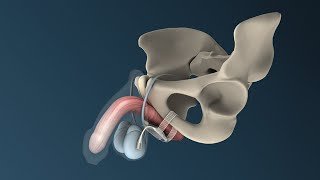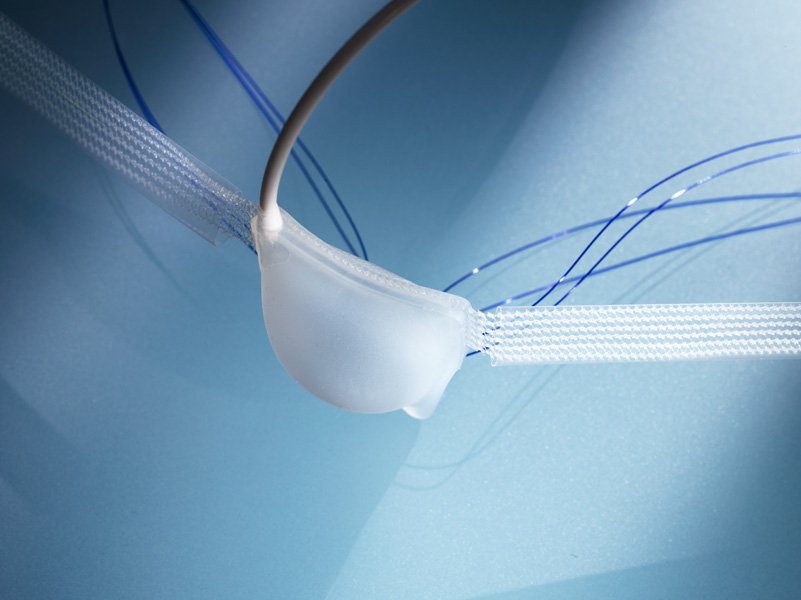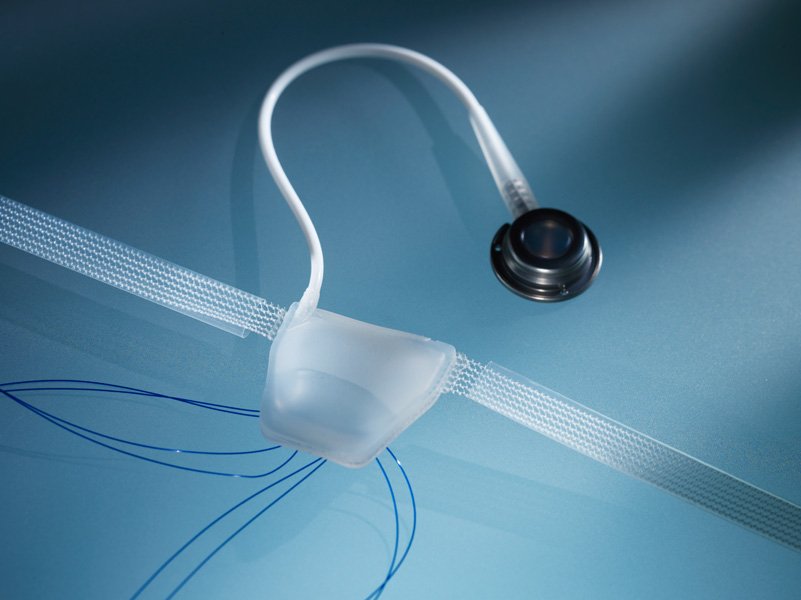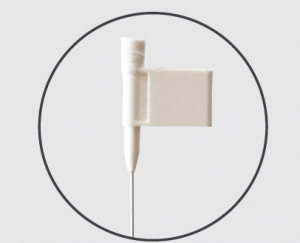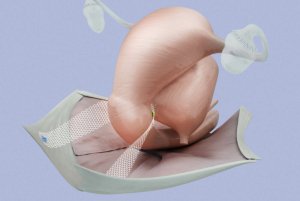ATOMS Adjustable Transobturator Male System
ATOMS is made of biocompatible synthetic material. The protective sleeve for the mesh arms is made of LDPE and the Pull-in aid and protective sleeve for the port is made of PTFE. The permanent implant consists of monofilament (polypropylene) mesh arms with an integrated HCR (high consistency rubber) silicone cushion with fixation sutures (polypropylene). The cushion supports the bulbar urethra.
The pre-attached scrotal port (titanium and silicone) provides an intra- or post-operative adjustment by filling (or removing) volume of the cushion. ATOMS is suitable for MRI examinations with magnetic field strengths up to 3 Tesla.
Description
The suburethral sphincter cushion
The cushion applies compression to the m. bulbospongiosus and thereby to the urethra. This compression reduces involuntary loss of urine while still facilitating a physiological contraction to cause deliberate urination.
4-point fixation
The sling is a self-anchoring device and the symmetrical positioning of the cushion below the urethra is achieved by a 4-point fixation. The integrated mesh arms are drawn back around the inferior pubic ramus to the middle of the implant to secure the system in place.
Scrotal Port
The attached port is positioned in the scrotum. Via the port, the fi lling volume of the cushion and thereby the compression to bulbospongiosus muscle is adjustable. Filling volume is adjusted using a non-coring port needle by the surgeon and depending on the patient´s anatomy and needs.
Features & Benefits
-
Self-anchoring implant – no need for additional fixation elements
-
Functional independency of patient’s mental and / or physical abilities (no manual activation/deactivation necessary)
-
Implant postoperatively adjustable for all degrees of incontinence in patients with an existing residual sphincter muscle function
-
Improved Quality of Life (QoL) in male patients with stress urinary incontinence (SUI)
-
Efficient improvement of incontinence in male patients with mild, moderate and severe stress-urinary incontinence (after radical prostatectomy/prostate surgery)
-
Postoperative adjustment of the implant by a minimal invasive treatment for multiple times to improve efficacy for each patient without increased risk of complications
-
Very low risk of intraoperative complications


